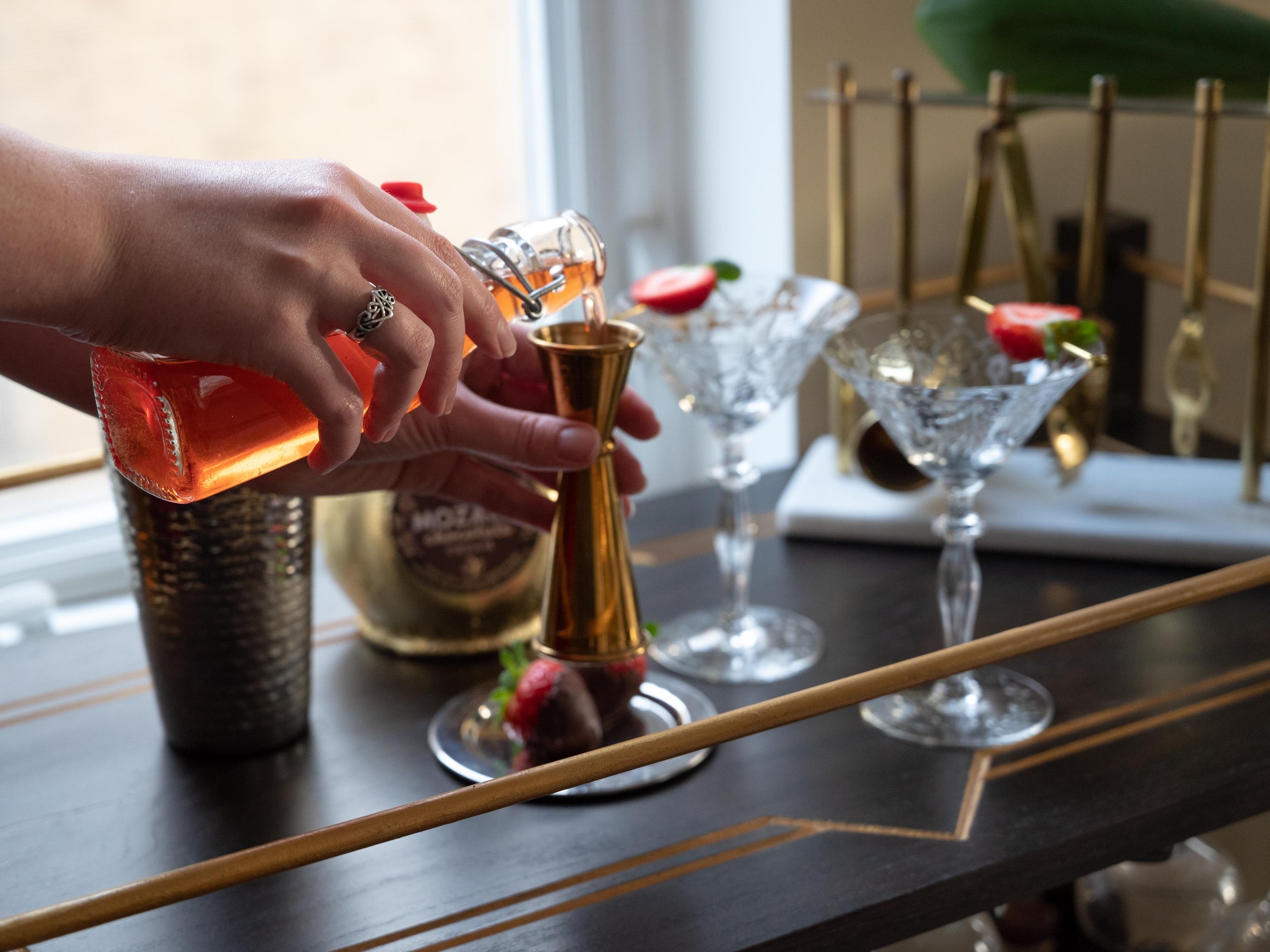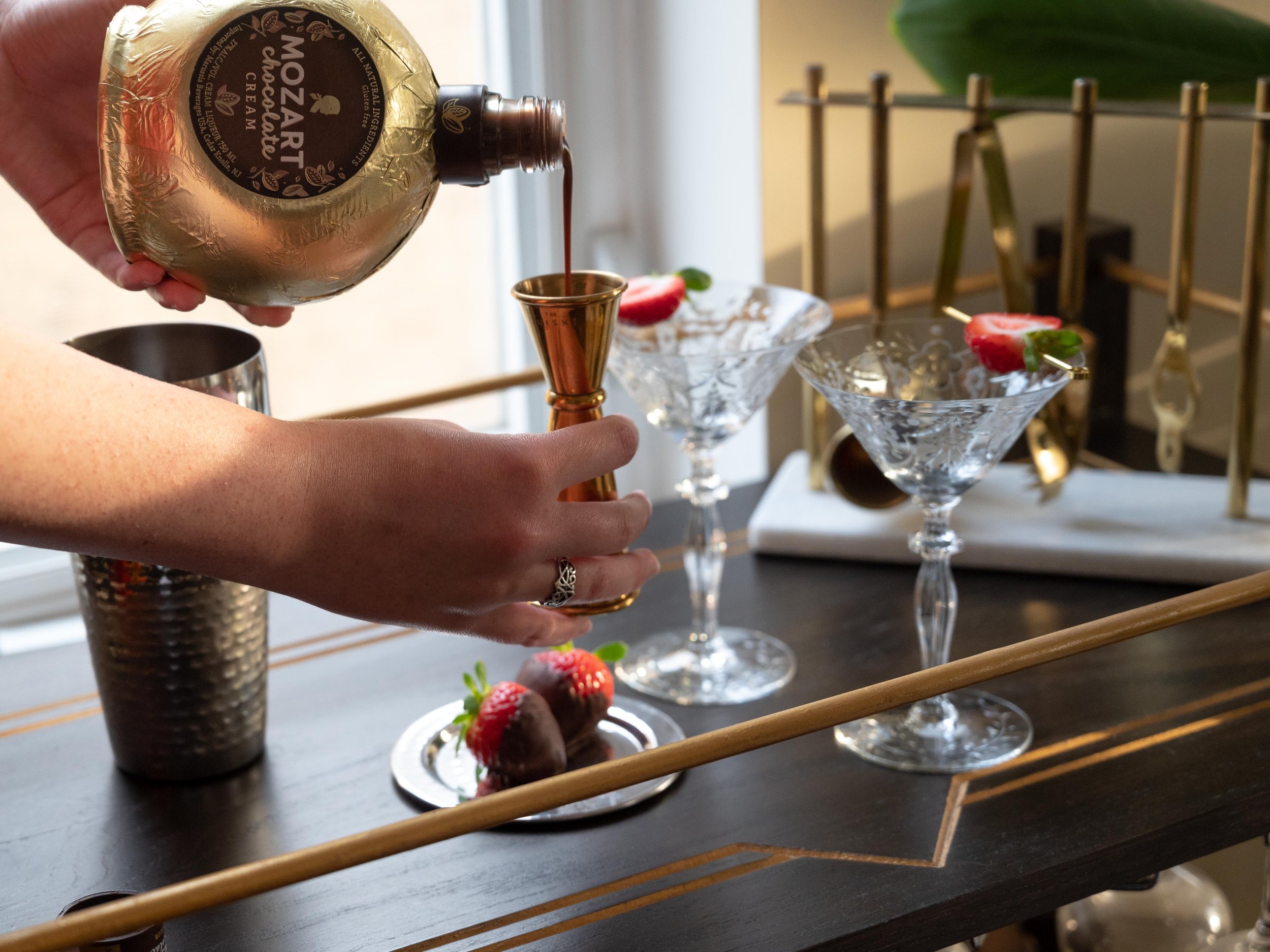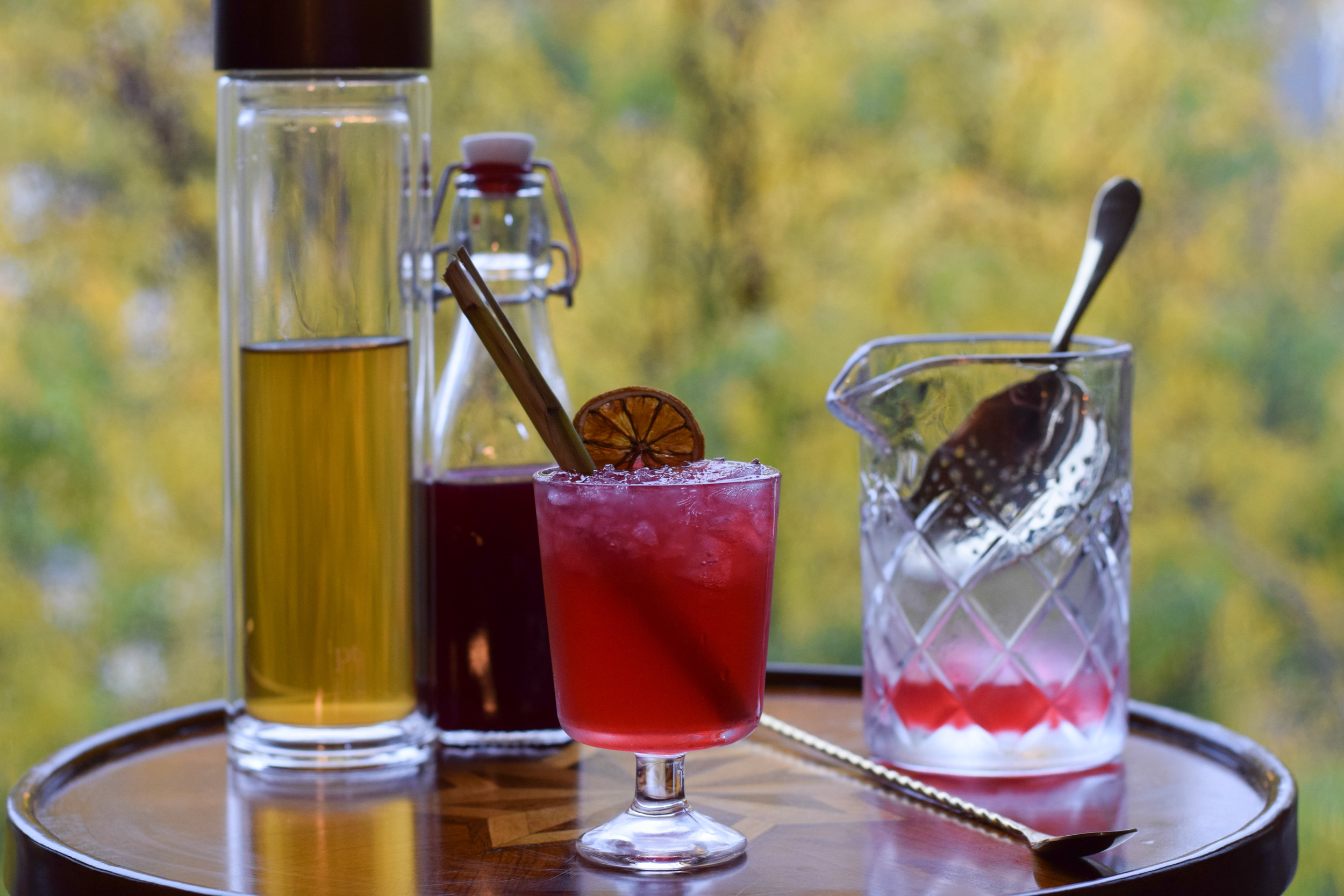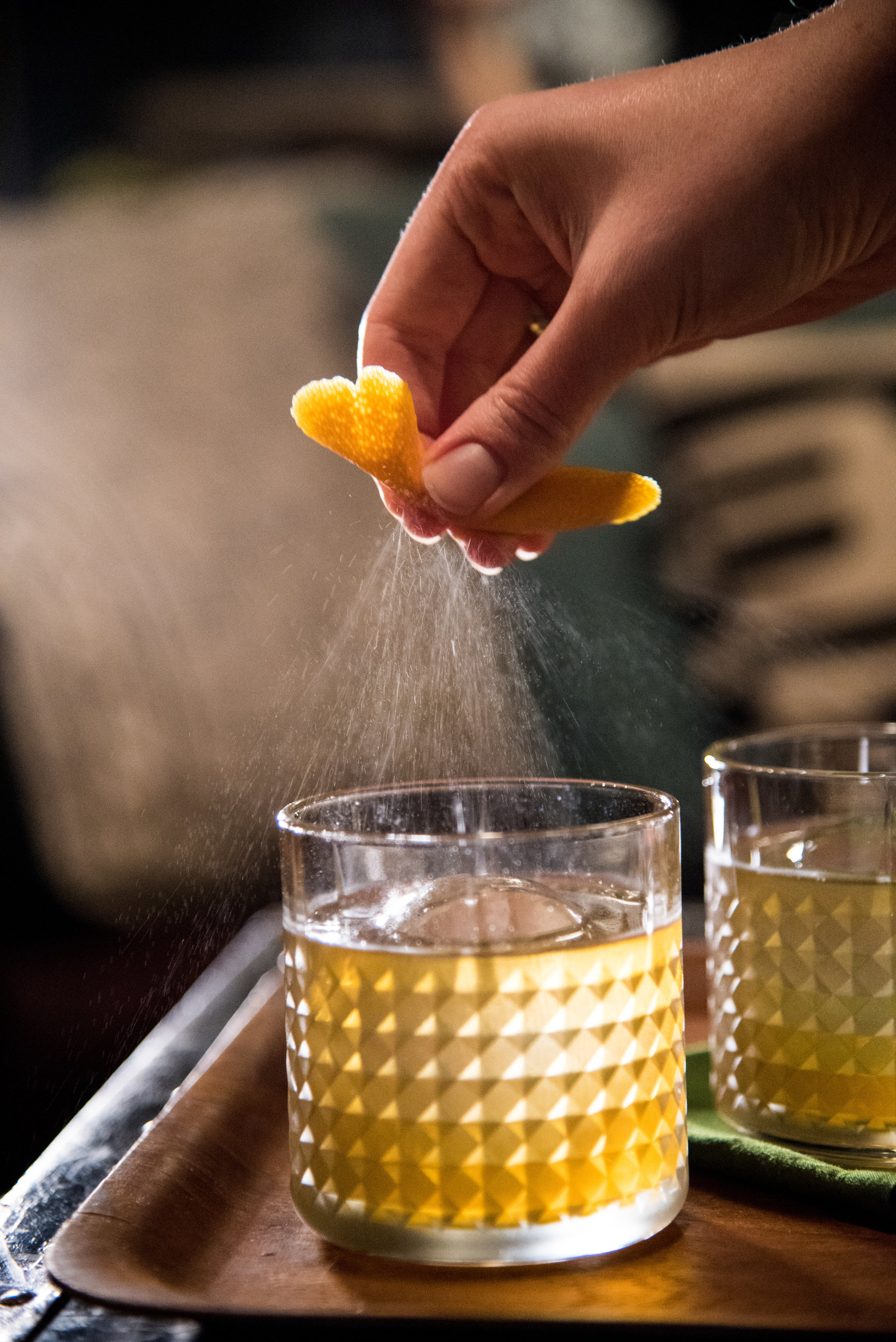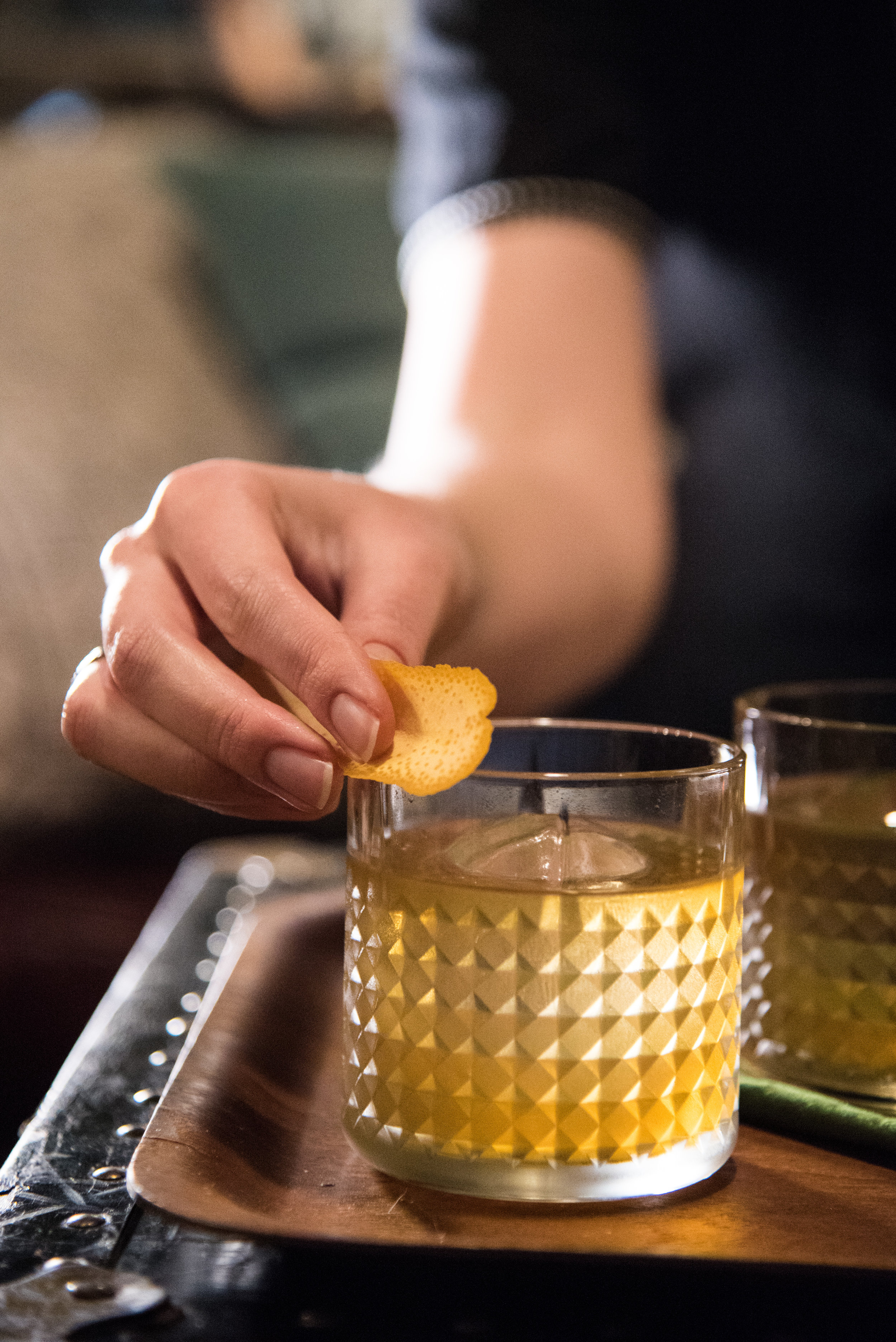A Sumptuous Serenade
How do you celebrate love? Is it through thoughtful actions? Kind words? Physical touch? Time and time again I find that I return to thoughtful actions, often in the form of cooking and making cocktails. A holiday like Valentine’s Day is a great excuse to craft a cocktail to surprise and enchant your partner or friends, but truly this can and should be done any time of the year.
When building a cocktail with the theme of love or romance it’s important to me to make it not stereotypically gendered, something anyone can enjoy even if it may be a spirit they are not as used to. I started this recipe with the flavor inspiration of chocolate covered strawberries while not necessarily being limited to being a dessert cocktail.
For the base I decided on unpeated single malt scotch, a spirit with enough character not to be overshadowed but to complement strong flavors like strawberry and chocolate. To keep the cocktail’s sweetness in check I introduced strawberries as an infusion in the scotch rather than a syrup. I highly recommend having organic strawberries in your freezer for this (Costco is a great cost-effective source) as they’ll be most dependable in ripeness any time of year and texture isn’t a factor when making an infusion. Be sure to use a glass vessel for your infusion (a mason jar will do) and agitate once a day to facilitate progress. Keep it in a dark place and taste and smell along the way until it’s to your liking. Somewhere between 3-7 days should do the trick.
The star of this cocktail is Mozart Milk Chocolate Liqueur - a velvety and indulgent Austrian treat made with Belgian chocolate, cream and Bourbon vanilla. It’s made from a sugar beet distillate and sweetened with sugar from sugar beets as well. This liqueur brought a wonderful richness and depth of chocolate flavor to the cocktail. I further enhanced the vanilla notes with a bit of my favorite cherry bark vanilla bitters.
To round out the drink I added cold brewed milk oolong tea. Milk oolong hails from Taiwan and is known for its creamy buttery taste. It’s absolutely fantastic on its own but is also great to enhance a creamy mouthfeel in a cocktail while keeping it light.
The resulting cocktail is sumptuous but refreshing, with the strawberry, chocolate and vanilla flavors being perfectly balanced by the creamy freshness of the oolong.
A Sumptuous Serenade
2 oz strawberry infused unpeated scotch*
0.5 oz Mozart Milk Chocolate liqueur
1 oz cold brewed milk oolong tea**
1 dropper cherry bark vanilla bitters
Strawberry, for garnish
Add all ingredients other than strawberry to a shaker with ice and shake until chilled and incorporated. Strain into a coupe or martini glass and garnish with a strawberry half on a cocktail pick (use cocktail pick to stir cocktail occasionally to keep it from separating). Serve with chocolate covered strawberries on the side for an extra special treat and enjoy as a celebration of love.
*To make infused scotch, add strawberries and scotch in a 1:2 ratio to a glass jar and put in a dark place. Agitate and taste daily until desired flavor is achieved (3-7 days), then strain before enjoying. Keep in the fridge for better shelf life.
**To make cold brewed tea, add 1 tbsp tea leaves and 8 oz of water to a jar and allow to infuse for 8-12 hours. Strain and keep in the fridge.

